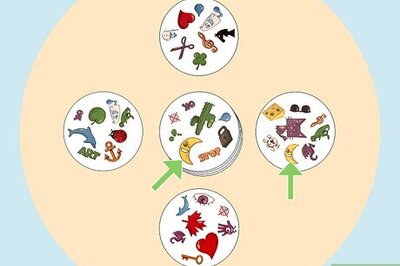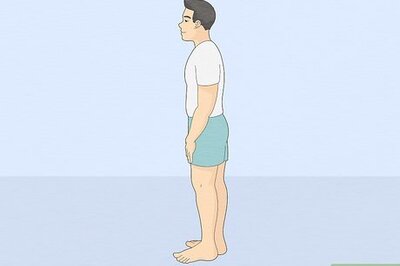
views
New Delhi: How many times have you entered your favorite McDonald’s next lane and saw the counters empty?
Well, going by the popular belief and experience, the answer is ‘never’. Or leaving aside those one or two lean days when you may find a place to sit and munch over those French-fries, very easily, you will find Mc Donald’s outlet always brimming with crowd.
No wonder that the fast-food chain is already rolling in millions wherever it has business—in every country across the globe.
McDonald’s attracts 15 million customers a day, and has 31,000 stores in over 118 countries. So, how did the food chain get this big and profitable?
One of the keys to success is its strategic location. From New York to New Delhi—you will find a Mc Donald’s outlet right at the end of the busiest roads and lanes.
The Mc Donald’s franchisers identify and choose the key location, which is already a crowd puller, so that there is no dearth of curious walk-ins who later turn into regular buyers.
Also, the chain has self-service, which allows better revenues by saving all the expense that could have incurred on keeping waiters and butlers. Also, you can count on the neat and clean, hygienic interiors and carry-away foods.
Mc Donald’s History
A visionary named Ray Kroc made a few hamburger stands into a food empire. Back then hamburgers were sold for 15 cents and French fries for 10 cents. Today, this giant makes $41 million in revenue.
Ray Kroc tapped into the drive and ambition of the individual store owners. But his success started when he realised what a rage drive-in restaurants were in Southern California in the 1950s, especially those run by the McDonald brothers.
But Dick McDonald knew that customers were looking for even faster service. They speeded up the process by dropping most of the things from the menu like root beer and orangeade and copying a factory assembly line. So, they retained the big moneymakers and these were the fries, cheeseburgers and milkshakes, which were then put on an efficient production line.
PAGE_BREAK
They reopened after this revamp and they began to get sales clerks, cab drivers and construction workers, who wanted their food fast and here they got that.
At that time, Ray Kroc was selling multi-mixers that could make five milkshakes at once and he got an order from the McDonald brothers for eight such machines. Kroc had never received such a large order from one place before, so, he went to check out the place and that was when history was made. He signed a contract with them to be an exclusive franchise representative.
In 1960, Kroc bought out the McDonald brothers and it first went public in 1965. The very next day, Ray Kroc became a millionaire.
McJobs
Back in the 1950s, you could open a McDonald's with $30,000. Today, ofcourse, it could cost a million dollars or more to buy a McDonald's franchise.
But working at McDonald's can be thought of as a low paying 'Mcjob' with a staggering turnover. A McDonald's manager can earn $100,000 or more and soon they can move on to having their own store and becoming a millionaire - just like the store owner they first began working for.
Tyron Davis is one such manager and he's all set to own his own franchise and he knows how to work the ropes to keep them happy and coming back for more. He cheerfully oversees the other employees, offers a refund because a customer waited for his food and ofcourse, just knows that the restrooms have got to be clean - or the customers won't come back again.
It's this efficiency which has made McDonald's bigger and more efficient than any of its competitors. Financially, McDonald's is soaring with annual revenues of more than $21 billion but that's a major turnaround from where the company was a couple of years ago.
Chief Executive Officer, McDonald's, Jim Skinner told CNBC, "I call the year 2002 the 'year of the perfect storm', where all of ths strategies I was pursuing - we hit the wall with our growth strategy in 2002."
This strategy included opening more than 2,000 restaurants a year. It was unsustainable. Skinner recalls, "We invested $4 billion in new store growth over the last 3-4 years. There was no incremental growth. So, that was a formula for failure."
Customers were not finding happy meals, but instead they found dirty stores, cold food and a detached staff. On Main Street, McDonald's was out of favour and on Wall Street, McDonald's stock was getting hammered.
So, executives woke up to pull up their socks and clean up their act in their existing facilities. They knew they had to concentrate on cleanliness and better quality service. The kitchens were revamped and sandwiches were no longer stockpiled but were instead made-to-order.
They added more chicken and salads to reflect the evolving taste. They spent less time building more stores and more time focusing on the ones they had. But in the middle of this turnaround, McDonald's weathered a double blow - in a span of seven months - the company went through two CEOs because one keeled over and died of a heart attack at a McDonald's convention and his successor died a few months later due to cancer. Skinner was the third one to step up to bat.
But change was in the air and work on bringing customers back was on in full force. So, McDonald's added a line of premium coffees which lured people back from Starbucks. People started coming back for breakfast as well, which is huge for McDonald's as it brings in almost a quarter of a dollar.
With excerpts from a moneycontrol.com report


















Comments
0 comment